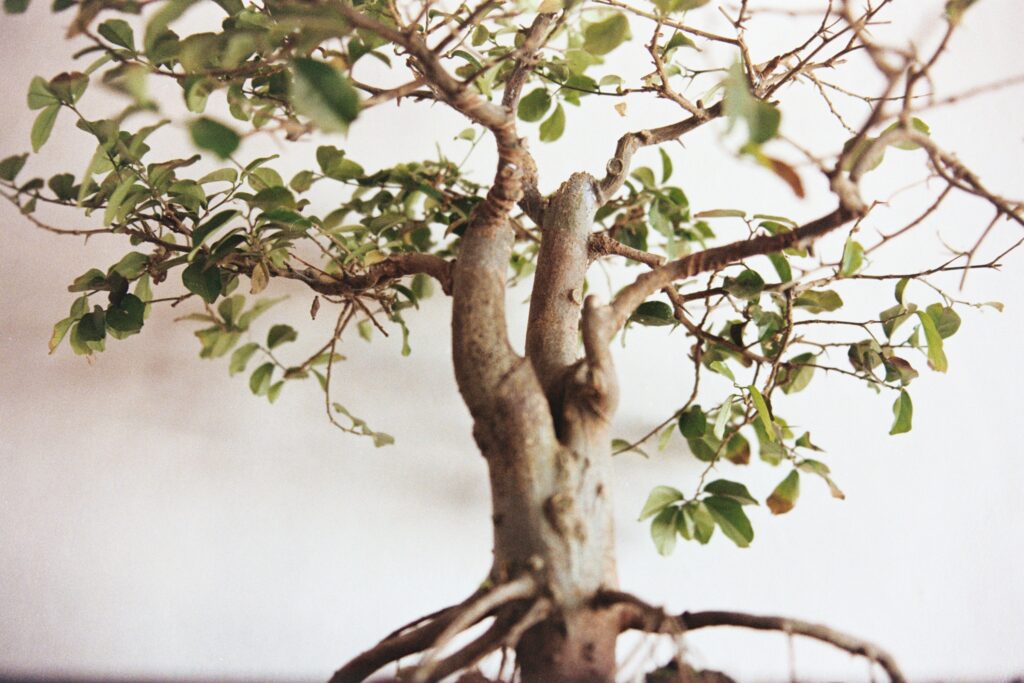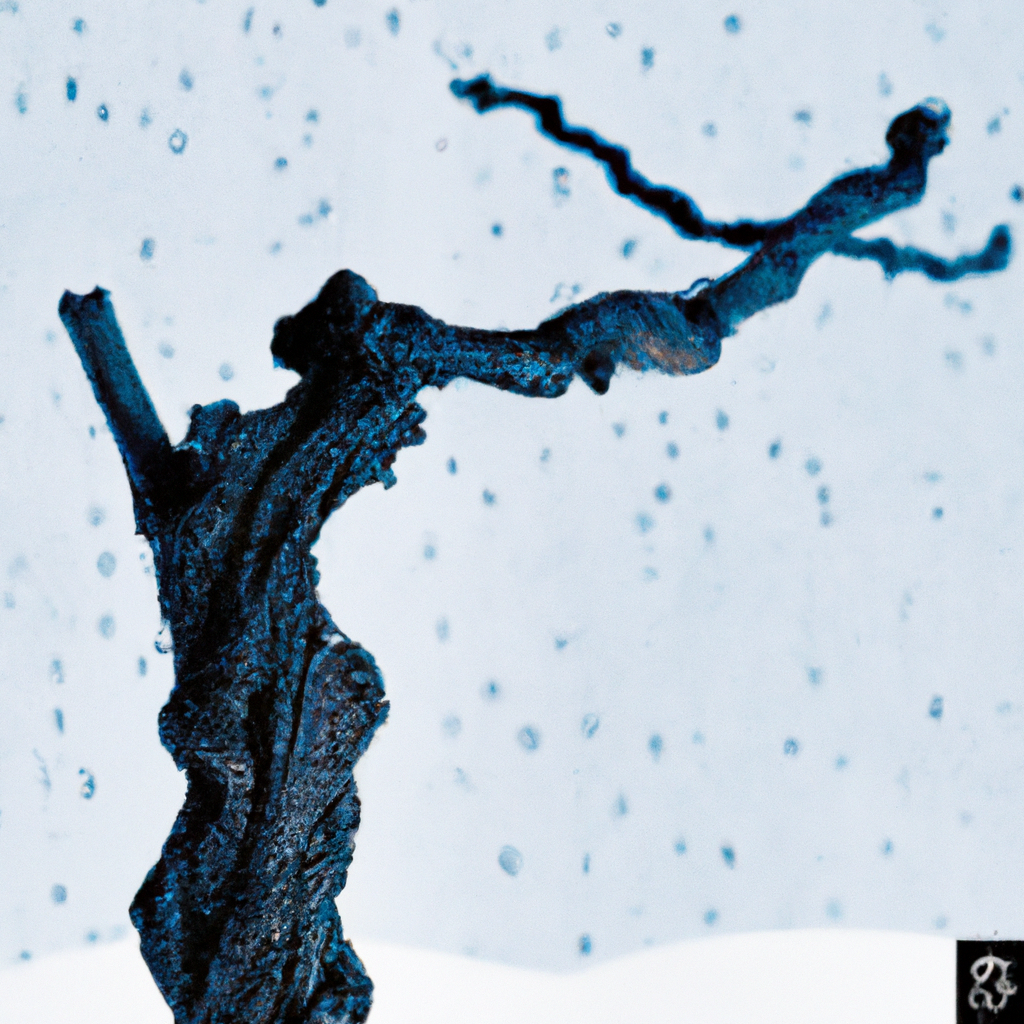
If you’re a fan of bonsai gardening or have recently developed an interest in it, then you’re in for a treat. In this article, we will explore the fascinating world of pruning and wiring techniques specifically tailored for elm bonsai trees. Whether you’re a seasoned bonsai enthusiast looking to enhance your skills or a beginner eager to learn the art of shaping and training these miniature masterpieces, this guide will provide you with valuable insights and practical tips that will help you create stunning elm bonsai specimens. So grab your shears and wire cutters, and let’s embark on this exciting bonsai adventure together.
Choosing the Right Tools
Types of pruning tools
When it comes to pruning your Elm Bonsai, having the right tools is crucial. There are several types of pruning tools that you should consider including in your toolkit. These include pruning shears, also known as secateurs, which are ideal for cutting small branches and twigs. For slightly larger branches, you may need a branch cutter or knob cutter. A concave cutter can help make clean cuts and remove unwanted branches. Finally, a pruning saw may be necessary for larger branches that cannot be easily cut with the other tools.
Types of wiring tools
Wiring is another important aspect of shaping and training your Elm Bonsai. To properly wire your tree, you will need a few specific tools. Wire cutters are essential for cutting the wire to the desired length, while wire pliers will help you twist and secure the wire in place. Additionally, having a set of jin pliers can be useful for creating deadwood features on your bonsai.
Understanding Pruning
Pruning objectives
Pruning is not just about the aesthetics of your Elm Bonsai; it also serves several important objectives. One of the main goals of pruning is to maintain the overall shape and size of the bonsai. By carefully removing unwanted branches and foliage, you can ensure that your tree maintains its desired form. Pruning also helps improve the overall health of the bonsai by promoting airflow and sunlight penetration, preventing the spread of diseases, and stimulating new growth.
Timing of pruning
Timing is crucial when it comes to pruning your Elm Bonsai. The best time to prune is typically during the dormant season, which is usually in late winter or early spring before new growth begins. Pruning during this time allows the tree to recover before the growing season starts. However, minor pruning can still be done during the growing season to maintain the tree’s shape and remove any damaged or diseased branches.
Basic pruning techniques
There are several basic pruning techniques that you should familiarize yourself with when caring for your Elm Bonsai. These techniques include removing unwanted branches, thinning dense foliage, and encouraging back budding. When removing branches, it’s important to make clean cuts just above the branch collar to promote proper healing. Thinning dense foliage involves selectively removing excess leaves and branches to allow for better airflow and lighting. Encouraging back budding, on the other hand, involves pruning the tips of branches to stimulate new growth closer to the trunk.

Understanding Wiring
Wiring objectives
Wiring is a technique used to shape and train the branches of your Elm Bonsai. The objectives of wiring are to create movement and establish the desired shape of the tree. By carefully bending and positioning the branches, you can achieve a natural and harmonious design.
Timing of wiring
Wiring should be done when the tree is actively growing and flexible enough to withstand the shaping process. Spring and early summer are often the best times to wire your Elm Bonsai, as the branches are more pliable during this period. However, be mindful not to wire too tightly or for too long, as this can cause wire bite or damage to the branches.
Types of wire
There are various types of wire available for wiring your Elm Bonsai. Aluminum wire is a popular choice due to its ease of use, affordability, and availability in different sizes. Copper wire, on the other hand, is known for its strength and ability to hold branches in place. Both types of wire have their advantages, so it’s important to consider the specific needs of your bonsai when choosing the right wire.
Preparing for Pruning
Assessing the tree’s health
Before you begin pruning your Elm Bonsai, it’s important to assess the tree’s overall health. Look for any signs of diseases, pests, or nutrient deficiencies that may need to be addressed before pruning. Examine the foliage, branches, and trunk for any abnormalities or discoloration. Taking the time to assess the tree’s health will ensure that you are making informed decisions when pruning and help promote the tree’s long-term well-being.
Cleaning and sanitizing tools
To prevent the spread of diseases or pests, it’s essential to clean and sanitize your pruning tools before and after each use. Start by removing any debris or sap from the tools using a wire brush or cloth. Next, disinfect the tools by wiping them with a solution of rubbing alcohol or a bleach-water mixture. This simple step can help prevent the transmission of harmful organisms and keep your Elm Bonsai healthy.
Identifying areas for pruning
When preparing to prune your Elm Bonsai, take the time to carefully identify the areas that need attention. Look for branches that are crossing or rubbing against each other, as these can cause damage and hinder growth. Identify any weak or dead branches that should be removed to promote the overall health and appearance of the tree. By identifying areas for pruning beforehand, you can have a clear plan of action and ensure that your pruning efforts are targeted and effective.

Pruning Techniques
Removing unwanted branches
Removing unwanted branches is a fundamental pruning technique for maintaining the shape and health of your Elm Bonsai. Start by identifying the branches that need to be removed, focusing on those that detract from the overall design. Utilizing the appropriate pruning tool, make a clean cut just above the branch collar, avoiding leaving stubs. This technique promotes proper healing and reduces the risk of disease or fungal infections.
Thinning dense foliage
Thinning dense foliage is an essential pruning technique to improve light penetration and airflow within your Elm Bonsai. Identify areas where the branches or leaves are overly dense and, using pruning shears, selectively remove excess growth. Aim to maintain a harmonious balance between the foliage and the overall shape of the tree. Thinning dense foliage allows for better light distribution and reduces the risk of pests or diseases.
Encouraging back budding
Back budding is the process of stimulating new growth closer to the trunk of the Elm Bonsai. This technique helps develop secondary branches and creates a fuller and more balanced appearance. To encourage back budding, prune the tips of branches, which redirects energy to lower buds. This will result in new growth closer to the trunk, giving your bonsai a more vibrant and lush appearance.
Basic Wiring Techniques
Choosing the right wire gauge
When using wire to shape your Elm Bonsai, it’s crucial to choose the right wire gauge. The wire gauge refers to the thickness of the wire and should be selected based on the size and flexibility of the branches you are wiring. As a general rule, choose a wire gauge that is approximately one-third the thickness of the branch you are working on. This ensures that the wire is strong enough to hold the branch in place while allowing for flexibility and growth.
Wrapping wire correctly
Properly wrapping wire around the branches is essential to achieve the desired shape while minimizing potential damage. Start by positioning the wire diagonally along the branch, ensuring it is tight enough to hold the branch securely but not too tight to cause damage or wire bite. As you wrap the wire, make overlapping turns, ensuring even spacing between each loop. Avoid wrapping wire directly over foliage or buds, as this can cause injury to the tree.
Avoiding damage to the tree
When applying wire to your Elm Bonsai, it’s important to be mindful of potential damage to the branches and trunk. Take care not to wrap the wire too tightly, as this can result in wire bite, which causes unsightly marks or scars on the tree. Regularly monitor the wire and adjust or remove it if it begins to cut into the bark. Additionally, avoid bending branches too abruptly or forcefully, as this can lead to branch breakage or damage.

Advanced Wiring Techniques
Wiring branches for movement
Advanced wiring techniques involve creating movement in the branches of your Elm Bonsai. By carefully bending and positioning the wire, you can achieve a natural and dynamic appearance. When working on the branches, start at the base and gradually work your way towards the tip, ensuring that the tension is evenly distributed along the length of the branch. Take your time and make small adjustments as needed to create the desired curvature and movement.
Creating natural curves
Creating natural curves in the branches of your Elm Bonsai adds visual interest and realism to its overall design. When wiring, carefully shape the wire into gentle curves, mimicking the natural growth pattern of the tree. By following the natural contours, you can achieve a more organic and harmonious appearance. Remember to periodically check the wire tension and readjust as necessary to maintain the desired curves.
Using guy wires
Guy wires are an effective tool for training branches that are too thick or stiff to be shaped with regular wiring techniques. They provide additional support and help guide the branch into the desired position. To use a guy wire, attach it to a secure anchor point and gently pull the branch into place. Adjust the tension of the guy wire as necessary to achieve the desired angle or movement. Guy wires should be periodically checked and adjusted to prevent any damage to the branches.
Common Pruning Mistakes to Avoid
Over-pruning
One common mistake when pruning Elm Bonsai is over-pruning. Removing too many branches or foliage at once can weaken the tree and disturb its overall balance. It’s important to have a clear plan and avoid excessive pruning. Take the time to carefully assess which branches should be removed and focus on achieving a natural and balanced appearance.
Improper branch angle cuts
When removing branches, it’s essential to make proper branch angle cuts. Cutting too close to the trunk can result in unsightly stubs that are slow to heal. On the other hand, cutting too far away from the trunk can create large wounds that are difficult to heal. Aim to make clean cuts just above the branch collar, which is the swollen area where the branch meets the trunk. This promotes proper healing and reduces the risk of disease or infection.
Neglecting proper healing techniques
After pruning, allowing your Elm Bonsai to heal properly is crucial for its overall health and appearance. Avoid applying any products or sealants to the pruning wounds, as they can hinder the healing process. Instead, let the tree naturally seal the wounds using its own defenses. Adequate sunlight, airflow, and regular maintenance will promote healthy healing and prevent the risk of disease or fungal infections.

Common Wiring Mistakes to Avoid
Using wire that is too thick
Using wire that is too thick can cause damage to the branches of your Elm Bonsai. The wire should have sufficient strength to hold the branch in place but should not be overly thick and rigid. Choose a wire gauge that is appropriate for the branch’s size and flexibility to avoid causing stress or injury to the tree. Regularly monitor the wire and remove or adjust it as the branch grows to prevent wire bite or damage.
Wrapping wire too tightly
One of the common mistakes when wiring is wrapping the wire too tightly around the branches. Wire that is wrapped too tightly can cause wire bite, resulting in unsightly marks or scars on the tree. When applying wire, ensure it is tight enough to hold the branch in place but not so tight that it causes harm. Regularly check the wire tension and readjust as necessary to maintain a balanced and healthy bonsai.
Damaging branches during wire removal
When it’s time to remove the wire from your Elm Bonsai, it’s important to do so carefully to avoid damaging the branches. Use wire cutters or wire pliers to gently unwind and remove the wire, taking care not to pull or twist the branches. If the wire is firmly embedded in the bark, consider cutting the wire into smaller segments to prevent any damage. Take your time and proceed with caution to ensure the branches remain intact and healthy.
Aftercare and Maintenance
Monitoring tree growth
After pruning and wiring your Elm Bonsai, regular monitoring of its growth is essential. Observe the tree for any signs of stress, disease, or pest infestation. Pay attention to the development of new buds and branches, as well as the overall health and appearance of the foliage. By closely monitoring its growth, you can identify and address any issues before they become more severe.
Regular maintenance pruning
Maintaining the shape and health of your Elm Bonsai requires ongoing maintenance pruning. This involves regularly inspecting the tree and selectively removing any excess growth, deadwood, or branches that detract from its overall appearance. Regular maintenance pruning helps promote airflow, reduce disease risks, and maintain the tree’s desired shape. Remember to follow proper pruning techniques and avoid over-pruning to ensure the long-term well-being of your bonsai.
Removing wire at the right time
It’s important to remove the wire from your Elm Bonsai at the right time to prevent any damage or wire bite. Regularly check the branches to ensure that the wire is not cutting into the bark or inhibiting growth. Once the branches have set in place and the desired shape has been achieved, carefully remove the wire using wire cutters or pliers. Take your time and unwind the wire gently to avoid any potential damage to the branches. Removing the wire at the right time ensures that the tree can continue to grow and thrive.
